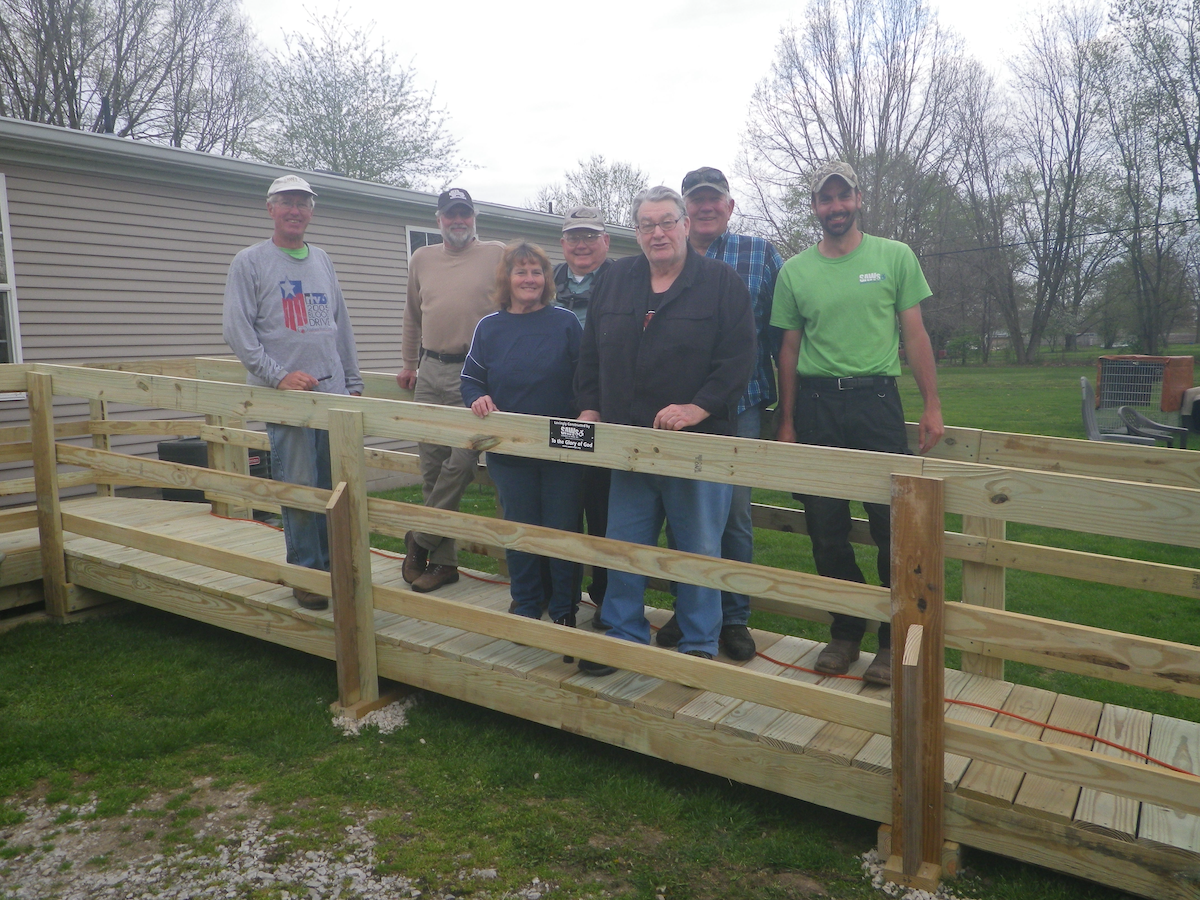by Sarah Duke
A mobile home is a great way to get an excellent house for an affordable price. But they rarely come with ramps and getting up and down the stairs can be difficult, especially if you are in a wheelchair. The good news is that there is a way to overcome this problem. You just need a wheelchair ramp.
Servants at Work, Inc. builds ramps for people living with disabilities in low-income households. Volunteers power our mission and help us build freedom for those who need access. For those who are considering a do-it-yourself ramp, here are some of the steps you will need to follow.
Measure for the Ramp
The first thing that you need to do is decide what size and shape the ramp will need to be. There are a few elements that you will need to measure. First, you’ll need to know how wide the door to the mobile home is. You’ll want to make your ramp a few inches wider than this.
Next, it’s time to consider how long the ramp should be. To do this, you first need to determine how many inches off the ground the ramp will need to be. Then, you will need to consider how severe the slope will be. It’s recommended that you go no steeper than 1:12. This means that there is one inch of rise to every 12 inches of the ramp.
Once you know the height, you know how long the ramp has to be. Simply multiply the desired ramp height by 1:12 to get the number of inches the ramp should be. For example, if you need it to be 10 inches high, the ramp has to be 120 inches or 12 feet long. After 30 inches of rise, you need to have a flat platform.
If you don’t have enough space to accommodate the ramp, you might need to break it into two sections, with a landing in the middle. These landings should be at least 60 inches squared. If the ramp will be a permeant structure, you will need to make sure that it complies with local rules. You might need a building permit. This site goes into more depth about how to plan your ramp.
Assemble the Frame
Now, it’s time to start assembling the frame. A few quick words of advice. It’s best to use treated lumber when doing this. Also, it’s best to use screws, rather than nails. They will hold everything in place more securely.
There are a few steps that you need to follow to complete the frame. These are:
- Build the platform at the top of the ramp. This ensures that the top of the ramp is flush with the door. Depending on the length of the ramp, you might need to build a few additional platforms to act as landings
- Add the joists. These act as support beams on either side of the ramp. You might want to add a third joist in the middle for additional support.
- Add the posts. These will hold the joists in place. If you want the ramp to be a permanent structure, it’s best to dig footings for the posts and concrete them into place.
- Attach the joists to the posts. Use heavy-duty screws for this step.
- Screw the decking boards to the joists.
- Finish by screwing a handrail to the top of the ramp.
While this can seem like a lot of work, the process is very straightforward. This video will talk you through it. Set aside at least half a day to construct the ramp.
Using the Ramp
Once the ramp has been built, there’s just one thing left to do. Put it to use. If you are going to be using the ramp frequently, it might be best to get an electric wheelchair. This makes it a lot easier to travel up the ramp. If you are interested in a motorized version, this guide will talk you through the types of electric wheelchairs available and how to find one that suits you.
Conclusion
You don’t need to be a handyman extraordinaire to attach a wheelchair ramp to your mobile home. You can DIY a wheelchair accessible ramp with a basic knowledge of construction and a few tools to build a ramp that can last for years to come. For those who need a hand building a ramp, apply for a ramp at https://www.sawsramps.org/apply-for-ramp-az-in-nv/, or if you are outside our service area, visit http://www.ramps.org.

